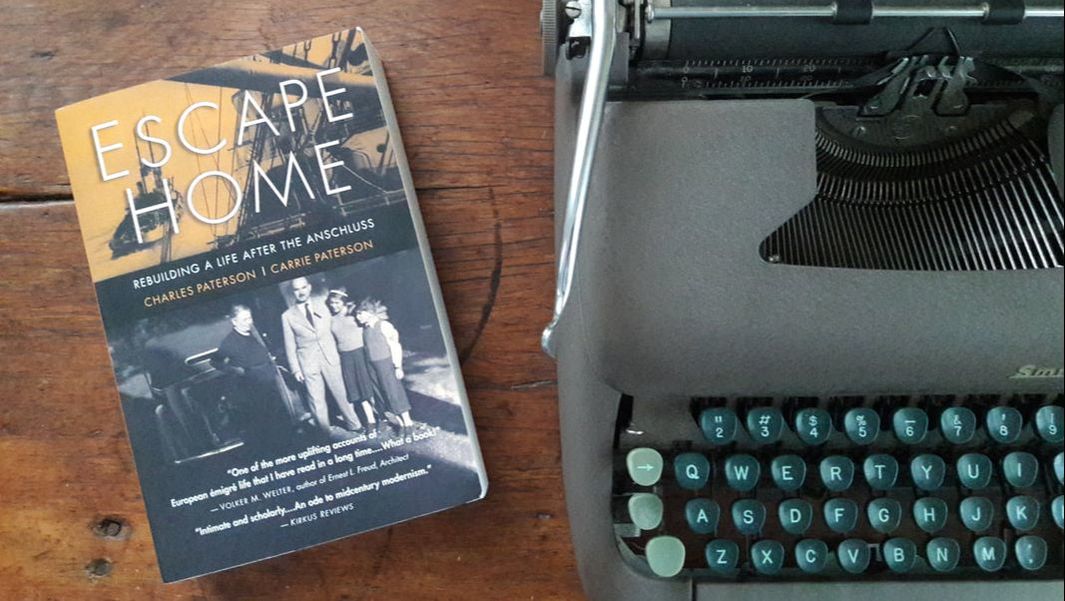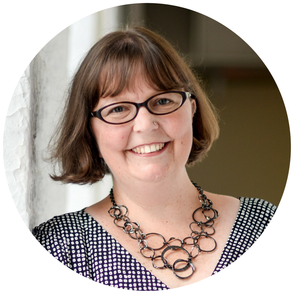Musings |
|
3/11/2018 0 Comments Reflections On: Escape Home“At some point with family history one has to stop moving backward, researching and reminiscing, and let time go on its forward roll again." When my paternal grandmother passed away in 2004, many of my family’s records, old photographs and letters were passed along to me. I’ve always been interested in history and genealogy, and so I became the family archivist. If you are fascinated by the stories you uncover as you delve into your family history, you will enjoy Escape Home: Rebuilding a Life After the Anschluss. I received a copy of Escape Home from the publisher, DoppelHouse Press, in exchange for a review. Before the book arrived, I did a bit of research. The authors are the father and daughter team of Charles and Carrie Paterson, though the book is written in the first person from Charles’s perspective. DoppelHouse Press is an independent publishing house that focuses on stories of exile and displacement of creative peoples. It was started in 2011 by Carrie Paterson and honors her Great Aunt, Claire Beck Loos, a writer an portrait photographer who was killed in the Holocaust in 1942. Having learned that one of its authors is also the publisher, I confess I was skeptical about the book’s merits. But my fears were unfounded. Charles and Carrie Paterson are superb storytellers, and their family’s history is a vibrant thread in the tapestry of our shared history. Born Karl Schanzer, Charles Paterson spent the first nine years of his live in Vienna, Austria, with his sister Doris and their parents, Eva and Stefan. Although the young country was in political disarray, the Schanzer’s life was, from the perspective of a young boy, idyllic. His earliest memories are punctuated by country drives in elegant motorcars, kayaking down the Danube River, ski trips and visits with family, including the renowned architect, Adolf Loos, and his wife, writer and portrait photographer, Claire Beck Loos. In 1932, the Schanzer’s purchased a home in the Werkbundsiedlung, a workers’ association housing complex commissioned by the city of Vienna. Joseph Frank oversaw the project and invited thirty-one of his contemporaries, including Austrian architects Adolf Loos, Josef Hoffmann and Richard Neutra, to design model floor plans for seventy homes, each with a small garden. The project exemplified what was at the time the avant-garde architectural style of early modernism. The Schanzer’s home was half of a duplex, or doppelhaus, designed by Jacques Groag. It is still standing at Number 46, Woinovichgasse. The illusion of this idyllic life was shattered in 1938 with the Anschluss, Hitler’s annexation of Austria. On the heels of the German occupation, Vienna experienced an outbreak of scarlet fever. Eva Schanzer fell ill and was hospitalized. Although she recovered from scarlet fever, she never recovered from her depression. She died by suicide just before she was to be released from the hospital. After Eva’s sudden death, the Schanzer family fled to Pilsen before moving on to Prague and, finally, Paris. Unable to acquire a travel visa, Stefan has his children baptised and sent them to Australia, where a business connection helped secure their adoption by the Paterson family. He then set off on a daring escape by bicycle to Portugal and was finally able to emigrate to the United States. Eight years after their separation, the Schanzer family was reunited in New York City. Stefan Schanzer had anglicized his name to Steve Shanzer. While in Australia, both children were given the last name Paterson, and Karl adopted his foster father’s name, Charles Paterson, as a tribute to the man who saved his life. The family started to build a life in New York. But when Charles took a casual ski trip to Colorado, he fell in love with Aspen and made the decision to start anew once more. At the time, Aspen was a small, largely underdeveloped resort town. Charles quickly secured a job as a bellhop at the Hotel Jerome and spent the remainder of the ski season working at the hotel and hitting the slopes. By the end of the season he had $750, enough to purchase three small lots. He visited New York several times, but always returned to Aspen, where he worked a variety of odd jobs in the construction and hospitality industries and built a small cabin out of leftover lumber. Eventually, Charles’s father, Steve, joined him in Aspen, and the two men embarked on a number of entrepreneurial ventures before opening a small, rustic ski lodge. Not long after Charles completed his service in the Army’s Mountain and Cold Weather Training Command, his life would take another fortuitous turn. While visiting a friend in Illinois, he is convinced to take a side trip to Spring Green, Wisconsin, to see Frank Lloyd Wright’s Taliesen. Immediately taken with Wright’s vision, he asked to interview as an apprentice. For the next three years Charles spent winters in Aspen and the rest of the year at Taliesen. During his Fellowship, he drew plans for the Boomerang Lodge, which was completed in 1960 and featured in Life magazine. Wright’s influence in the design, with its cathedral-like ceilings, large corner windows and walls of concrete-battered blocks, was immediately obvious. In 2005, Charles retired and sold the Boomerang Lodge. He spent the next eight years researching, writing and reminiscing about his life and his family’s history. Together with his daughter, Charles stitched together a patchwork of memories, letters, photographs, recipes and diary entries, into a compelling family history. I particularly enjoyed the collection of recipes at the conclusion of the book and was delighted to find that my recipe for Hungarian Goulash is quite similar to the Paterson’s recipe, which adds vinegar and soy sauce. The book is extremely well-documented, but it is the intimate tone of the book that makes it so charming.
Charles and Carrie Paterson are worthy carriers of their family’s history. While reading Escape Home: Rebuilding a Life After the Anschluss, I often felt like I was sitting by the fireplace at the Boomerang Lodge, listening to the Paterson family tell their story. There were times when I lost the thread that held the stories together, and the book is a bit longer than necessary, but that is the nature of a family history. And a small price to pay for the pleasure of reading such a well-crafted personal narrative. ★★★★ Escape Home: Rebuilding a Life After the Anschluss, a family history by Charles and Carrie Paterson, published by DoppelHouse Press in 2013. This book review is presented as part of my personal challenge to read and write a thoughtful review of at least 30 books in 2018. To learn more about this challenge, the books I have selected, and my imperfect rating system, click here.
0 Comments
Leave a Reply. |
|
|
The Scribbler's Journal
|
Contact |



